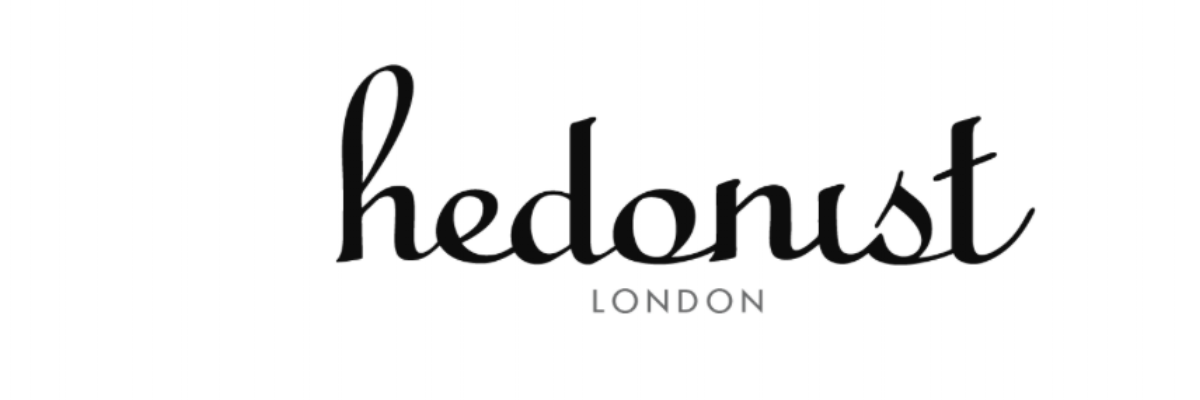Portrait Gold by Karl Ohiri: In My Mother’s Clothes
Words by Loren Hansi Momodu
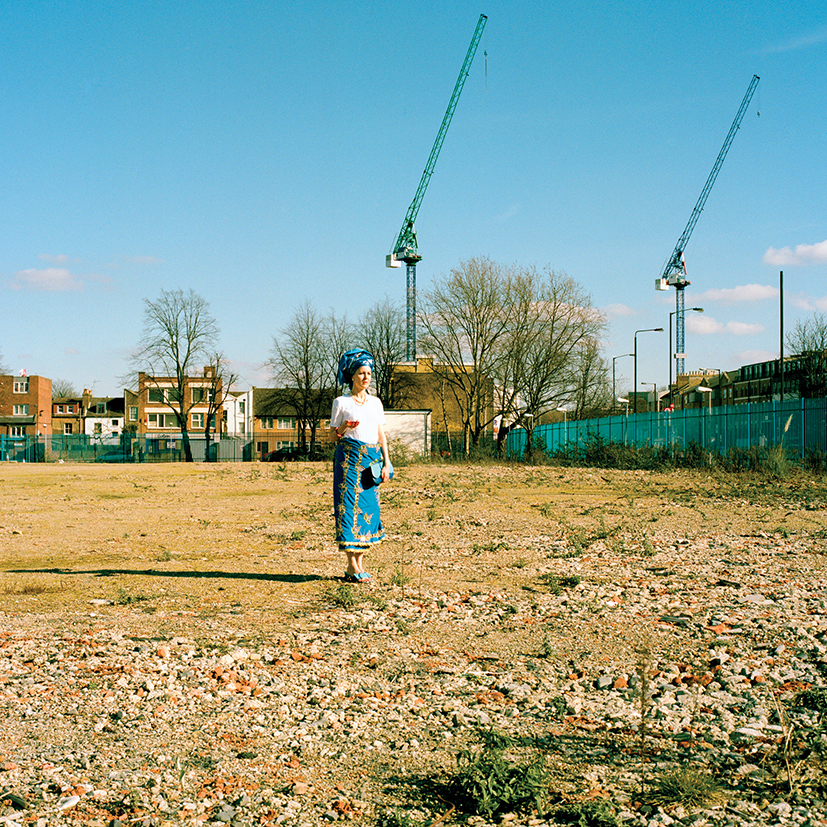
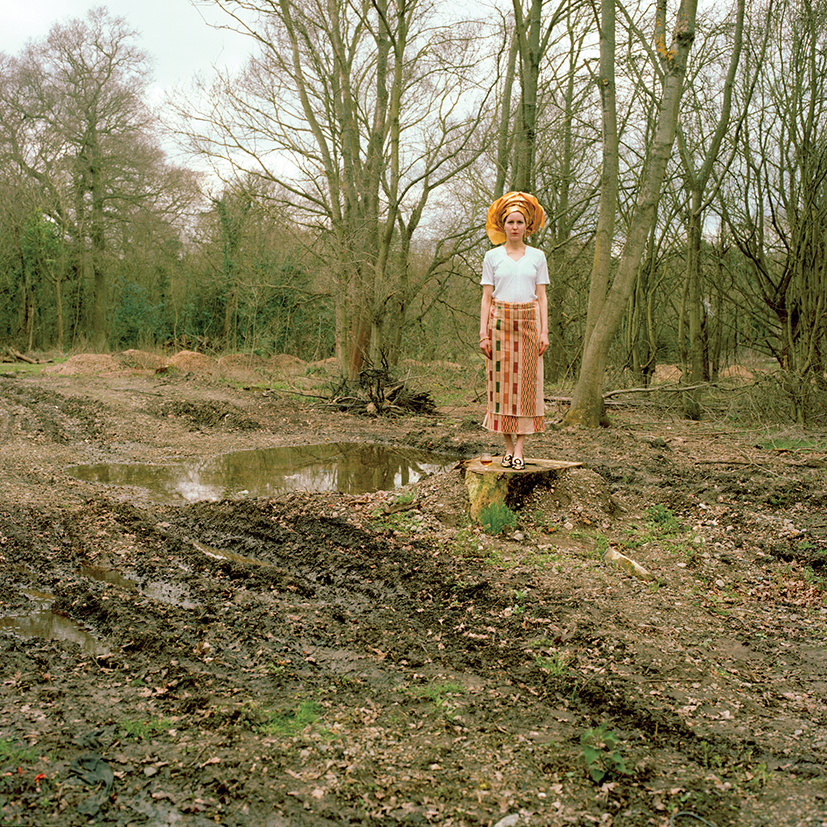
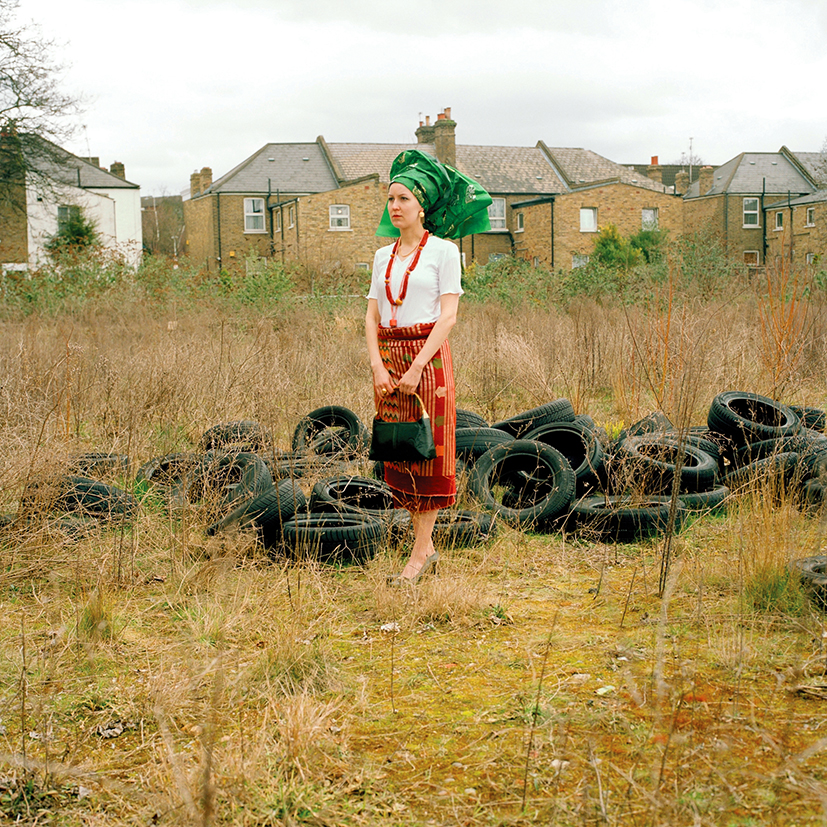

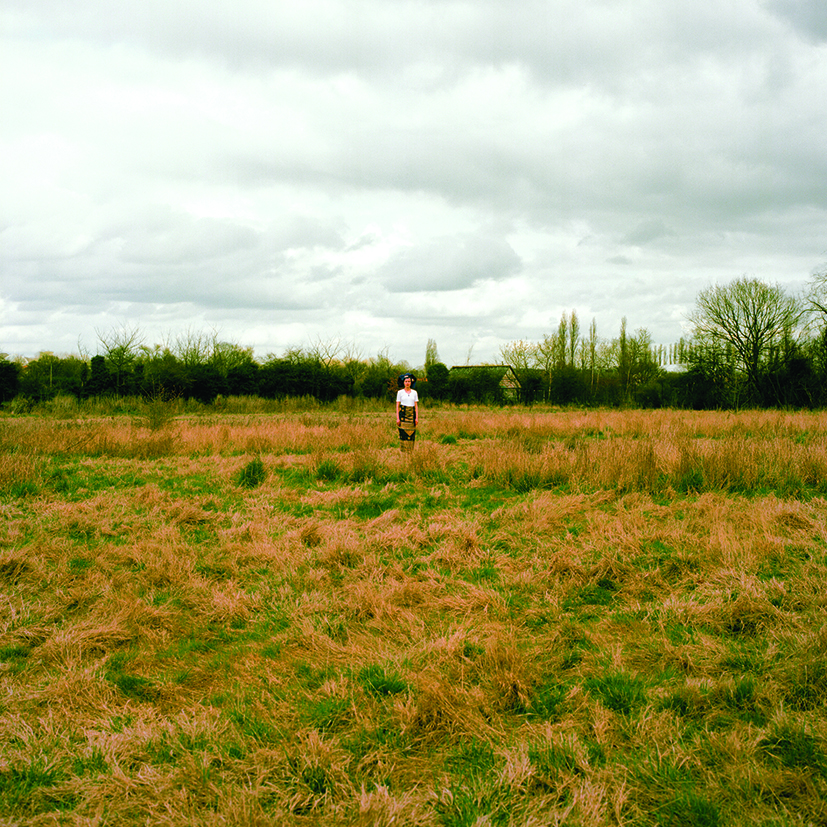
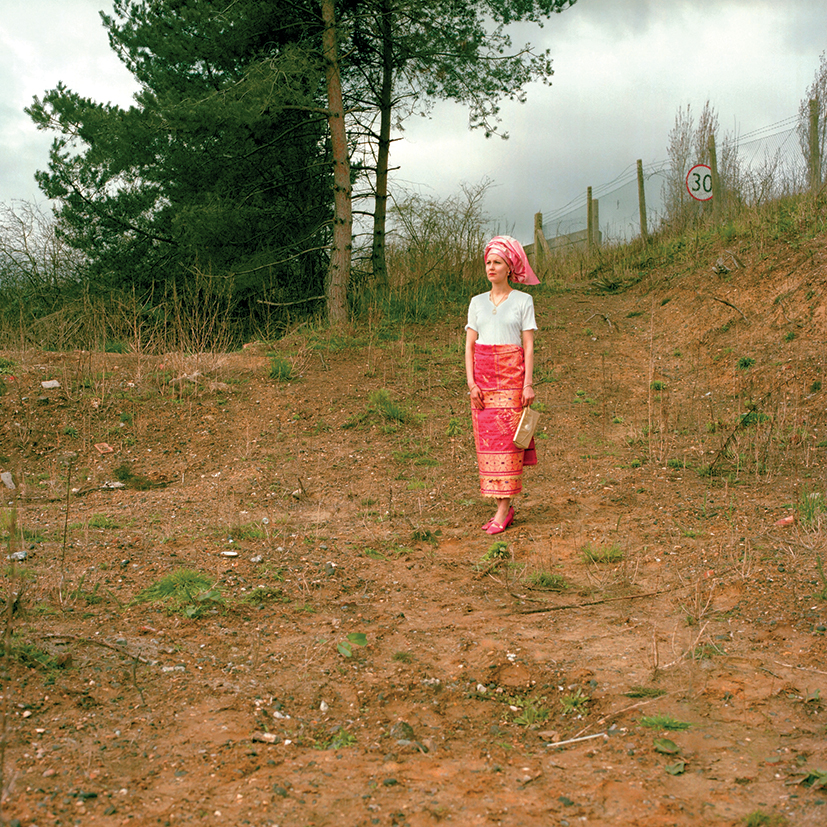
Throughout the history of images the female figure in the landscape has provided a familiar short hand for sentiments about nationalism. Inseparable from the earth, a part of the landscape the woman present becomes a symbol of national identity, the mother of the nation. Yet the familiar aspects of the composition in Karl Ohiri’s Portrait Gold fromIn My Mother’s Clothes 2010 are each elements of a larger more complex story. A story of migration, a questioning of what it means to be ‘native’ or indeed to wear ‘native’, what it means to settle in a country that is not that of your origin, and how it feels to be surrounded by land that is unfamiliar, perhaps even hostile.
Floating on an island, in the centre of this image the female figure holds a gaze directly out to the viewer. Her relaxed, confident posture is wrapped from waist to ankle in a brightly coloured, geometric print. Nails painted pillar-box red compliment the gold shoes that are equally unfit for purpose, given the surroundings. Crowning her head is a ‘Gele’, Nigerian head tie created with layers of gold fabric fanning and folding. When we read all these signs of ‘native’ African dress what we expect to see underneath these clothes is a ‘native’ African woman, but what Ohiri presents us with is a woman who looks distinctly European. Suddenly the ability to fall back on presumptions of race, belonging and identity is taken away.
In each of the six prints that comprise In My Mother’s Clothes 2010 this striking, brightly adorned woman is located in various semi urban wastelands. The solitary figure set in sharp contrast to the landscape she inhabits is not even at one with herself, as collaged pieces of common identities butt up against each other. The inspiration for this series of prints was a photograph Ohiri found of his mother wearing traditional Nigerian dress. Photographed for a special occasion, her posture was proud but also pensive. In a subtle yet powerful gesture it is Ohiri’s partner Riikka Kassinen who wear’s these clothes in Portrait Gold. It is Riikka Kassinen here wearing African clothes, in an English landscape, yet from a name unfamiliar to the English language it appears this woman is not a ‘native’ either, but has her own story of travel and relocation to another land. It is migration that has made this image possible, and that brings its impossibilities into question.
By employing both the over familiar and the unexpected Orihi opens up questions relating to our contemporary existence, as movement across the globe becomes second nature to a proportion of its inhabitants. Is it possible or even desirable to be ‘native’ of a particular land and what are the possibilities that open up when elements of cultural identity can be swapped and shared at will? Two generations of women, both with individual stories of migration, both perhaps historically would be recognised as symbolic of their nation of origin, but in this series this female figure in the landscape becomes symbolic of so much more. Not only of where we have come from, but also of where we are today.
